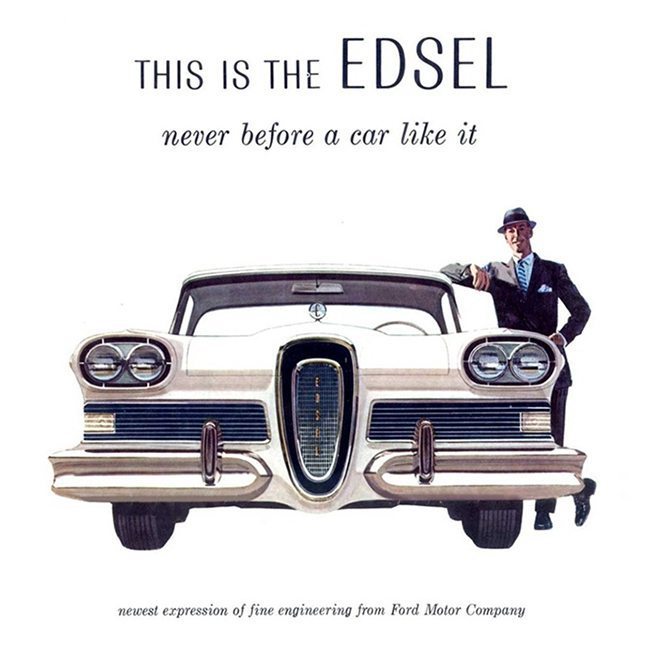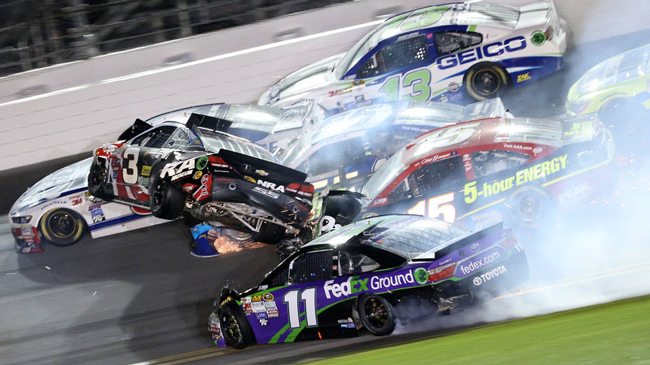Failure.
Point to a movie or a book that captivates, and I’ll show you failure.
Shrek.
Absolutely.
Something more high-brow, like the best-selling novel “A Little Life.”
Again, failure underpins the story.
For it’s the failure — something going horribly awry, the more pain the better — that creates the tension in a story.
As Kurt Vonnegut so nicely captured in his eight tips for storytelling:
“Be a Sadist. No matter how sweet and innocent your leading characters, make awful things happen to them — in order that the reader may see what they are made of.”
The same concept holds true in business communications. That’s why journalists embrace failure in their craft. Patricia Sellers from Fortune goes as far as to say, “If failure isn’t part of the story, I’m not that interested.”
While this poses a quandary for PR professionals — companies are wired to hide, not promote failure — it’s one that can be overcome.
I tend to think of failure in terms of a big “F” and a little “f.” It’s difficult for PR to leverage a big “F” Failure — the type that resonates with Ms. Sellers from Fortune — though it can be done. The CEO of Lifesize, Craig Malloy, penned a byliner last month that begins:
In order to stay afloat, I had to sink our ship. It was a daunting decision, but as the “Captain” it was necessary. Lifesize’s journey began in 2003 as a provider of communications equipment for conference rooms. By 2009 we were a $160 million powerhouse; Logitech noted our success and acquired us.
Initially, it was very validating, but as time passed the world changed: collaboration services started moving to the cloud, and Lifesize was stuck in the boardroom and the corporate data center. By 2014, we reached our “evolve-or-die” moment: ditch our legacy model, or go down with it.
Nice stage setting.
But it’s failure with the small “f” that constitutes the real storytelling gold for PR. These are situations that won’t necessarily torpedo the enterprise, but grade out as important to operations.
Journalists depend on small “f” failures all the time.
When the Chicago Tribune wrote about McDonald’s Innovation Center, we learned about inventions that didn’t see the light of day — like a contraption to dispense the right number of Chicken McNuggets for cooking, so employees wouldn’t have to count them out each time.
When The Wall Street Journal featured employee training at UPS, the lead jumped right to the failure.
Vexed that some 30% of driver candidates flunk its traditional training, United Parcel Service Inc. is moving beyond the classroom to ready its rookies for the road.
Nothing gentle about the word “flunk.”
As a third example, The New York Times last month wrote a story about Whole Foods that covered a small food producer called Cowgirl Creamery and how its first batch of organic triple-cream cheese — I’m guessing not approved by the American Heart Association — grew nonedible black mold after arriving on the shelves. Cowgirl founder Sue Conley added “color” to the debacle:
“It was awful. We hadn’t primed our new aging rooms, so other bacteria were competing with the fluffy white mold. It was a big mess.”
The Cowgirl failure, the UPS failure and the McDonald’s failure share a common denominator. They all enjoyed happy endings.
For Cowgirl, they fixed the problem, still count Whole Foods as a customer and now produce 800 pounds of cheese a day. The new training from UPS reduced the washouts to 10 percent. And McDonald’s got to evangelize inventions that have improved customer service.
Many companies will push back on using “failure” in PR. They believe that communicating anything negative can be risky and hurt the company’s reputation. Here, PR needs to make a case that the reader’s net takeaway is a positive one since the communication also includes the course correction.
What’s the risk?
Again, we know how the story ends, and it’s a happy one.

We also need to educate our stakeholders that if they want coverage in publications like The New York Times and The Wall Street Journal, the PR-driven content needs to align with how these journalists construct their stories.
One CEO who doesn’t need convincing is Jeff Bezos. His recent letter to shareholders calls out failure as one of Amazon’s competitive advantages:
“One area where I think we are especially distinctive is failure. I believe we are the best place in the world to fail (we have plenty of practice!), and failure and invention are inseparable twins. To invent you have to experiment, and if you know in advance that it’s going to work, it’s not an experiment. Most large organizations embrace the idea of invention, but are not willing to suffer the string of failed experiments necessary to get there.”
This theme of failure consistently surfaces in Amazon’s media coverage, not counting the New York Times expose on the company that falls under a different category since Amazon didn’t write the ending.
But when you do control the ending, bringing failure to the fore can pry open the toughest of media doors. Going back to the WSJ story on the UPS training, you can’t just jump to the positive punchline that 90 percent of trainees passed the training. The Journal isn’t going to write this story, since the single data point provides no context for the success. It’s only by bringing failure (small “f”) to the story — 30 percent flunked the old training — that the journalist gains context.
It takes two points of reference to generate the gap, which in turn becomes the tension in the story. The larger the gap, the greater the potential tension. Take away the negative point of reference, and the gap disappears. No story.
One final comment on failure —
There are times when PR can capitalize on someone else’s failure. This scenario played out last week when we landed a corporate feature for our client Sharper Shape in USA Today. As is often the case, the failure kicks off the story:
The biggest blackout ever in North America happened 13 years ago when high-voltage power lines brushed against overgrown trees in northern Ohio, triggering breakdowns on the grid that turned out lights in New York City and across eight states as well as Ontario, Canada.
Of course, the story delivers a happy ending.
Again proving the value of the “f” word in business storytelling.
Note: For more on failure, check out “Contrast, a Poor Man’s Failure in PR Storytelling” and “PR’s Answer to the Classic Storytelling Arc.”





